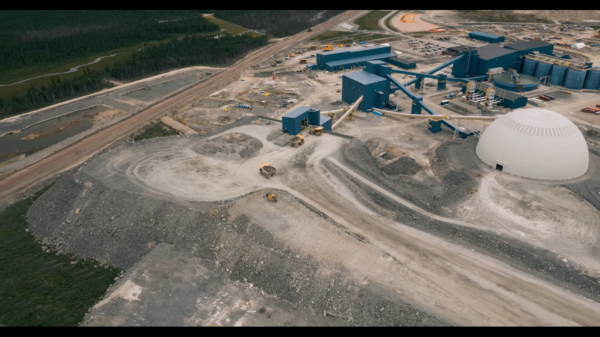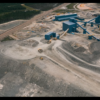Falcon Gold Corp. (TSXV:FG) (GR:3FA) (OTCQB:FGLDF) is finally ready to start operations at the Great Burnt Copper Project after high water levels washed away roads, barring the way in early spring.
The company explained on Thursday that it had to apply for permits to build an extra eight kilometers of road to access the drill sight. Falcon anticipates these roads being complete by the end of the week.
Falcon holds 2,275 hectares in the Great Burnt camp, with licenses situated north of and contiguous to Benton Resources Inc. (TSXV: BEX) and Homeland Nickel‘s (TSXV: SHL) (OTC: SRCGF) Great Burnt Copper-Gold joint venture.
Benton, formerly known as Spruce Ridge Resources Ltd., optioned the project to earn 70 per cent interest in the property. The Benton property hosts the Great Burnt Copper Zone.
This deposit includes an indicated resource of 381,300 tonnes at 2.68 percent Cu and inferred resources of 663,100 tonnes at 2.10 percent Cu.
Benton reported results showing 7.20 percent Cu, 7.12 g/t Ag, and 0.05 percent Co over 12.30 meters in recent drilling. Previous drilling by Spruce Ridge in 2020 reported 8.06 percent Cu over 27.2 meters.
Falcon’s CEO, Karim Rayani, said that now that the setback is in the past, his company is well-positioned in what is turning into Newfoundland’s highest-grade copper district.
“We look forward to reporting back on the start date once confirmed. Scheduled drilling is testing up to ten geophysical anomalies with a maximum of 1100 metres of drilling,” Rayani said.
Read more: Calibre Mining’s latest results may extend life of mine at Eastern Borosi
Read more: Calibre Mining’s latest finances show fifth straight year of growth
Newfoundland is known for copper and gold deposits
The Great Burnt Greenstone Belt, which is prospective for copper and gold, also hosts the South Pond A and South Pond B copper-gold zones and the End Zone copper prospect along a 14 km mineralized corridor. This mineralized corridor follows a conductive trend, which continues into Falcon’s Great Burnt Copper Property.
Newfoundland is known for its significant copper and gold deposits, particularly in the Baie Verte Peninsula and the Great Burnt Greenstone Belt.
Recently, there’s been growing interest in critical minerals such as nickel and cobalt, driven by the global push towards electrification and renewable energy technologies.
For example, Vale Newfoundland & Labrador Limited, a subsidiary of Vale S.A. (NYSE: VALE), operates the Voisey’s Bay Mine. This mine is one of the world’s leading sources of nickel.
Located in northern Labrador, this underground and open-pit mine also produces copper and cobalt as by-products. The Voisey’s Bay Mine is renowned for its high-grade nickel deposits, which are processed at the Long Harbour Processing Plant in Newfoundland.
Meanwhile, Calibre Mining‘s (TSX: CXB) (OTCQB: CXBMF) Valentine Gold Mine, located in Newfoundland’s Central region, is a significant open-pit gold mining project.
Valentine is the largest gold mine in Atlantic Canada. It contains proven and probable mineral reserves estimated at 3.09 million gold ounces.
Additionally, the mine will operate using conventional open-pit mining methods, with the ore processed through a milling and leaching circuit. In addition to gold, the mine’s operations and surrounding exploration activities have also indicated the presence of copper, making it a dual commodity project.
Calibre Mining is a sponsor of Mugglehead news coverage
Follow Joseph Morton on Twitter
joseph@mugglehead.com














